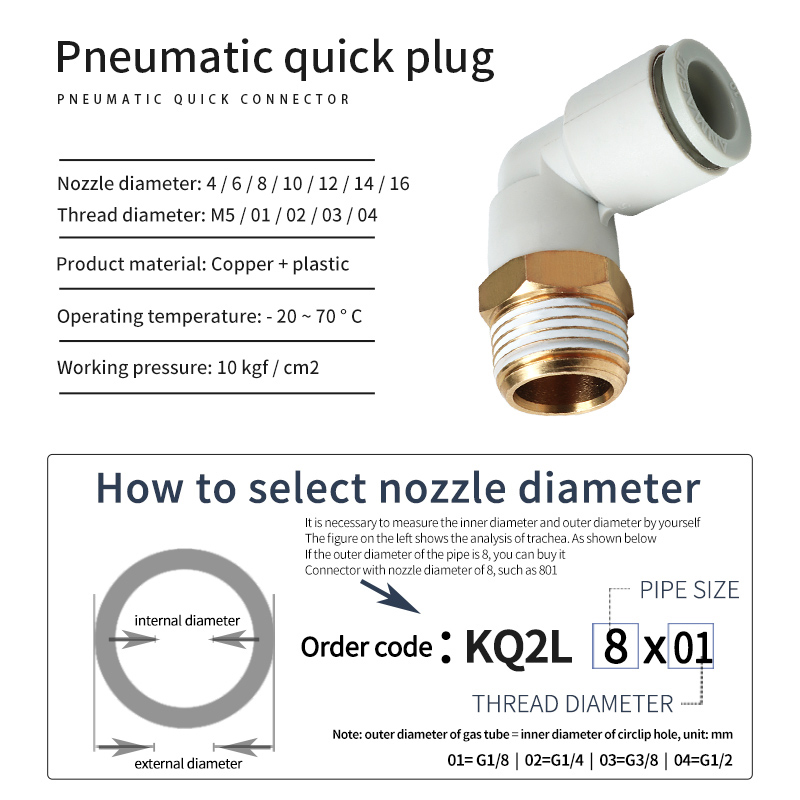- English
- Español
- Português
- русский
- Français
- 日本語
- Deutsch
- tiếng Việt
- Italiano
- Nederlands
- ภาษาไทย
- Polski
- 한국어
- Svenska
- magyar
- Malay
- বাংলা ভাষার
- Dansk
- Suomi
- हिन्दी
- Pilipino
- Türkçe
- Gaeilge
- العربية
- Indonesia
- Norsk
- تمل
- český
- ελληνικά
- український
- Javanese
- فارسی
- தமிழ்
- తెలుగు
- नेपाली
- Burmese
- български
- ລາວ
- Latine
- Қазақша
- Euskal
- Azərbaycan
- Slovenský jazyk
- Македонски
- Lietuvos
- Eesti Keel
- Română
- Slovenski
- मराठी
- Srpski језик
Professional Knowledge about Pneumatic Connector
2024-03-21
Professional Knowledge about Pneumatic Connector
Working Principle of Pneumatic Pneumatic Connector
The working principle of pneumatic joints mainly involves sealing, controlling fluid flow, and connecting pipeline systems. The following is a detailed introduction to its principle:

Sealing principle. When the pneumatic joint is not inflated, its sealing ring is in a normal state and can be easily inserted or wrapped around the pipe fittings. After filling the driving air pressure, the air pressure pushes the metal ring unit inside the main sleeve, which then compresses the front sealing ring, causing the sealing ring to expand and deform, forming a sealing contact with the pipe wall of the pipe fittings, achieving the effect of sealing connection.
Control fluid flow. Pneumatic joints can maintain sealing without driving air pressure, and after filling with driving air pressure, they can establish airtight contact to prevent leakage and pollution.
Connect the pipeline system. The pneumatic joint achieves a sealed connection of the pipe fittings through the combination of sealing rings and metal ring units. When not needed, the pipeline can be easily disconnected by releasing the snap of the snap ring.
These principles together ensure the sealing and effectiveness of pneumatic joints during gas or liquid flow processes.
The Structure Pneumatic Pneumatic Connector

1. CoverShell
The outer sleeve of pneumatic joints is usually made of metal materials such as copper, iron, stainless steel, and sometimes also made of materials such as plastic or rubber. The jacket consists of an inlet and outlet, where the inlet is used to connect existing pipelines and the outlet is used to connect the next pneumatic joint or other joint.
2. Inner Tube
The inner tube of the pneumatic joint is a pipe nested inside the outer jacket, and the size and shape of the inner tube depend on the flow rate and velocity of the medium. The inner tube is usually made of copper, iron, or stainless steel to ensure its corrosion resistance and load-bearing capacity.
3. Sealing Ring
The sealing ring of the pneumatic joint is an important component in preventing medium leakage. Normally, sealing rings are made of rubber or metal materials and have a circular appearance. Insert the sealing ring between the outer sleeve and inner tube to ensure that the pneumatic joint is in a sealed state.





